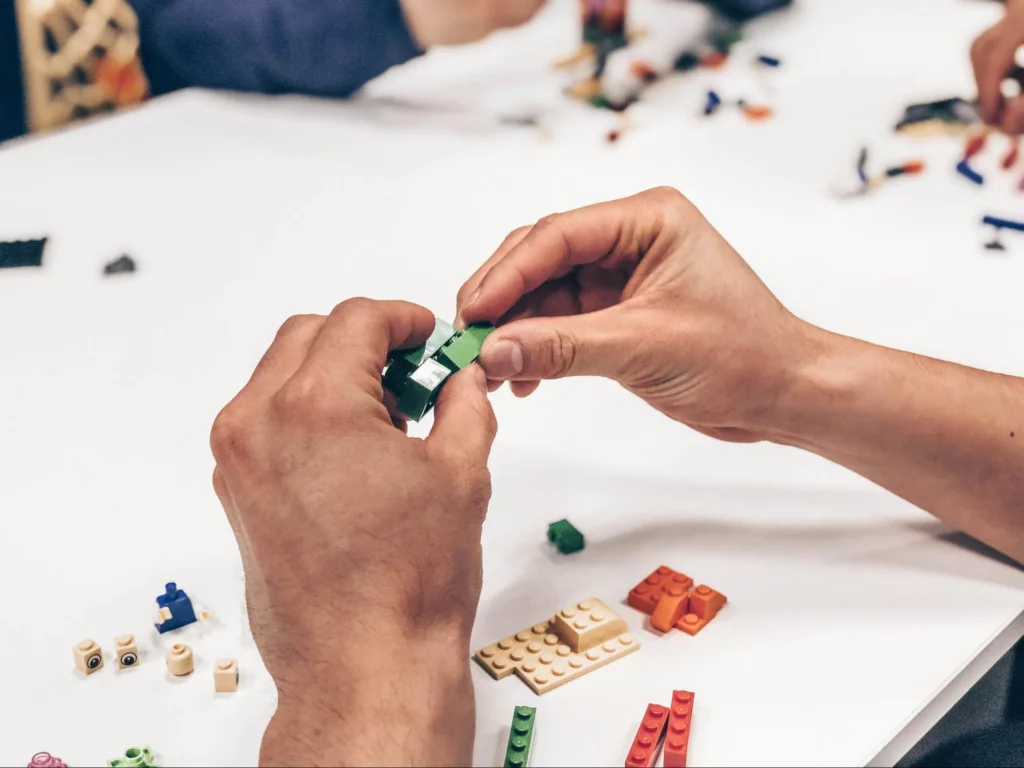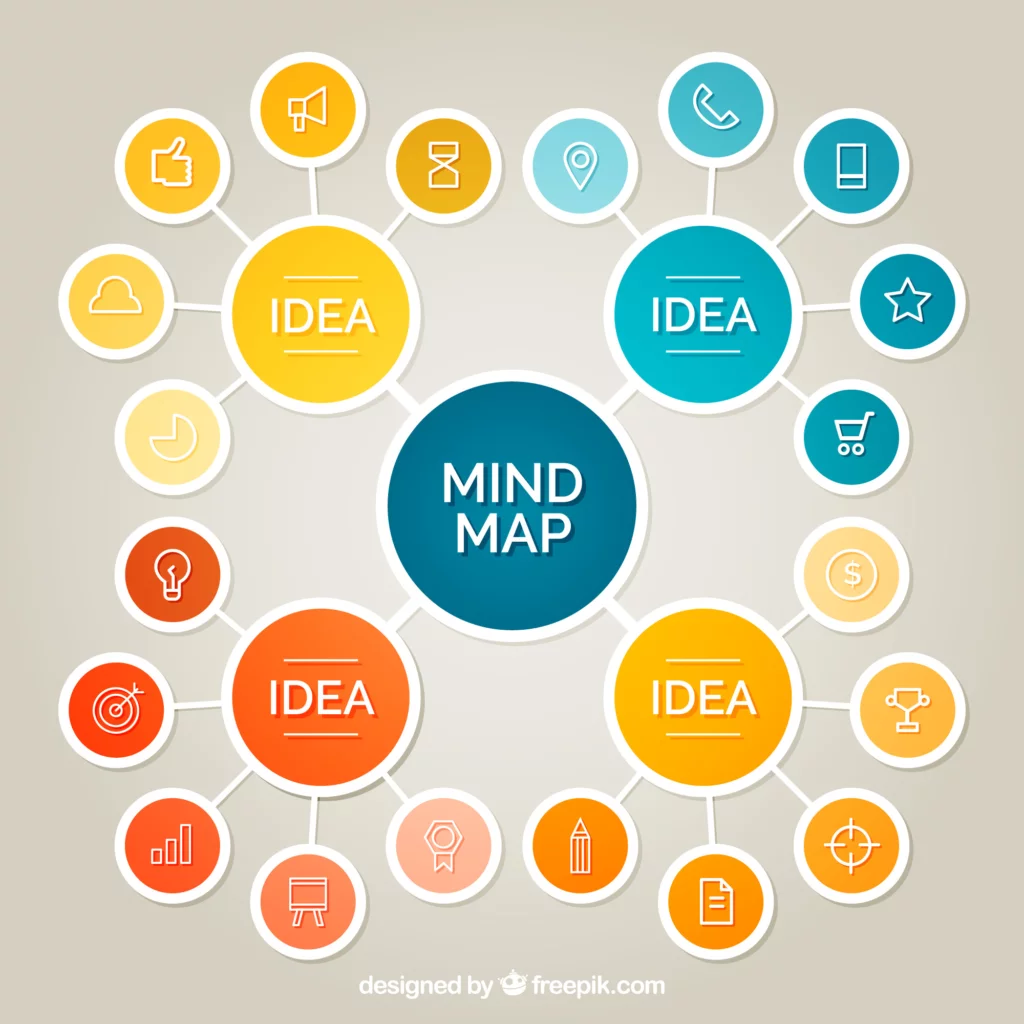In a world that revolves around innovation, one of the best and worst parts of software product development is the birth of an idea. This is when a spark of creativity turns into a potentially groundbreaking solution capable of revolutionising industries or simplifying life as we know it.
This is ‘ideation’ – the creative process of generating, developing, and communicating new ideas.
Ideation, however, is not a random event. It’s a complex process where diverse minds collaborate, bringing together their unique perspectives to build something extraordinary. And in the ever-evolving domain of software products, innovative ideas are the cornerstone of designing new solutions (and improving existing ones!) that cater to user needs and drive business success.
But how does ideation work in software product development? How can we optimise the product ideation process to yield more innovative and impactful ideas? And how can we navigate the challenges that may arise during this process? What role can emerging technologies, like generative AI, play in ideation?
Our experts will explore the answers to these questions and more in this comprehensive guide to ideation in software product development. Let’s dive in!
What Is Product Ideation?
What is ‘ideation’? The concept of ideation is often used interchangeably with brainstorming and idea generation. While not necessarily wrong, brainstorming and idea generation are a part of the product ideation process, not ideation itself.
Ideation is a process of generating, developing, and communicating creative ideas. Understanding that these ideas don’t always have to be groundbreaking is essential. Ideation can be applied to tackle specific problems you face in the product development process.
It’s a starting point where solutions to user problems begin to take shape. Here are the main benefits of successful product ideation:
✅Customer-centric solutions: Ideation helps develop solutions and product features that address real user needs and pain points, particularly when informed by user research and feedback.
✅Innovation: By exploring out-of-the-box ideas, ideation can be used to encourage innovation, which in turn can lead to unique software features or products that provide a competitive edge in the market.
✅Collaboration: Ideation sessions encourage collaboration across different roles, such as product managers, software engineers, designers, and other team members.
✅Product creation guidance: Ideas generated and prioritised during ideation guide the product vision. These fresh ideas and perspectives not only inform the product roadmap, but also feature prioritisation, as well as specific design and engineering decisions.
There are many ideation methods, but at MOHARA, we follow design thinking,
which is a human-centred approach to innovation, focusing on empathising with users, defining problems, ideating solutions, prototyping and testing.
The “Ideate” phase is the third step in the Design Thinking process. When you reach this stage, you’re ready to start generating creative solutions to your identified and defined problem.
In the ideation stage, the focus should be on producing many creative ideas without worrying about their feasibility or quality. The aim is to tap into the team’s collective creativity and explore as many possibilities as possible to develop innovative solutions.
The ideation process is a bit like building LEGO. Each brick represents an idea, and there are countless ways these ideas can fit together to create something unique!
When you sit down with a pile of LEGO bricks, you typically envision what you want to create. Similarly, in ideation, you start with a problem or challenge you want to solve. Rigid rules or structures do not limit you; the only limit is your creativity. You’re free to develop wild, innovative ideas in both of these activities.
Generate ideas
Just as you gather different LEGO bricks in various shapes, sizes, and colours, in ideation, you gather different ideas – some may be big and transformative, others might be small but crucial. Their different “shapes”, “sizes”, and “colours” represent different perspectives, areas of expertise, or angles of approach.
Build and experiment
As you can rearrange LEGO bricks, swap pieces, and try different configurations, ideation similarly allows you to play with multiple ideas. You can combine and connect your ideas in different ways, experimenting to see how they might work together to form a solution.
Refine and adjust
Just like with LEGO, where you might adjust, add, or remove bricks to create the model you envision, in ideation, you refine and adjust your ideas. Some ideas might be discarded, while others are improved or combined in novel ways.
Final structure
The final LEGO model combines all the right bricks arranged in the most effective way to represent your vision. Similarly, the outcome of the ideation process is a well-developed concept or solution that best addresses the initial challenge or problem.
Remember, like playing with LEGO, ideation is not always about building the tallest tower or the most complex structure. Sometimes, the most straightforward ideas lead to the most effective solutions. And most importantly, much like playing with LEGO, ideation should be a fun and creative process!
What’s next?
➡️Selection: Once you have a range of new and original ideas, the next step in ideation is to select the ones best suited to the development of innovative solutions. This is the moment of convergence for product teams, and it can get tricky.
➡️Validating ideas: After the generation phase, the team sifts through the ideas, grouping similar ones together, refining vague ideas, and eliminating those that don’t align with the project’s scope or objectives. The remaining ideas are evaluated based on feasibility, potential impact, alignment with business goals, and customer needs.
➡️Prototyping: Selected ideas are then turned into low-fidelity prototypes. These can be simple sketches, wireframes, or more interactive models. Prototyping allows stakeholders to visualise the concept and provides an early opportunity for gaining user feedback.
➡️Testing and feedback: The prototypes are then tested with users, and their feedback is gathered. This stage can provide valuable insights into the usability and desirability of the proposed solution.
➡️Finalizing the idea: Based on the testing feedback, ideas can be iterated upon and refined further until a final solution is reached that meets user needs, is technically feasible, and aligns with business objectives.
Ideally, we’d like ideation to feel as seamless and enjoyable as a playful session with a box full of LEGOs. And guess what? It absolutely can happen, given the right techniques are in play.
In the following sections, we’ll explore strategies to enhance your product ideation process.
Brainstorming
One of the most powerful techniques in product ideation is brainstorming. It’s a collaborative exercise where participants create ideas and build over those of others.
Brainstorming sessions are an essential part of coming up with new ideas. It’s all about getting together and sharing as many ideas as possible, even if some ideas seem totally out there. No one should worry about whether an idea is good or bad during brainstorming.
The aim is to think freely and say whatever comes to mind. This process often leads to creative solutions that might not have been found otherwise.
Conceived by Tony Buzan in 1972, mind mapping is a visual technique designed to stimulate the connection between various ideas or data sets.
The process begins with jotting down a main keyword, typically tied to your problem statement, at the centre of the page. Then, you let your mind roam freely, surrounding this central keyword with any related ideas that spring to mind.
The last step involves identifying the relationships between these ideas and illustrating these links. This exercise creates a visual map representing interconnected thoughts and concepts.
SCAMPER
SCAMPER is a creative thinking technique, and the acronym stands for Substitute, Combine, Adapt, Modify, Put to another use, Eliminate, and Reverse. Each of these actions can be applied to generate ideas for improving a product, a service, or even a process, or resolving a problem. Here’s what each of the seven strategies entails:
➡️Substitute: Consider replacing a part of the product, process, or situation with something else. For instance, can you substitute a feature or component of a software product with something more efficient?
➡️Combine: Explore combining two or more parts or elements to create something new. This could mean combining functionalities in a software product for improved user experience.
➡️Adapt: Look at how you can change or tweak the product or process to make it better. Can you adapt a feature to serve another function?
➡️Modify: Consider how you can alter or modify an aspect of your product, process, or situation. This could be modifying a user interface element for better usability.
➡️Put it to another use: Consider whether you can use the product or its parts in other ways or contexts.
➡️Eliminate: Look at what happens when you remove parts or elements of the product or process. Does it make things simpler, more cost-effective, or more efficient?
➡️Reverse and rearrange: Consider what could happen if you reversed the order or organisation of the process or product. Could a reverse in the workflow improve the software’s functionality?
Reverse thinking
Instead of asking, “How do I solve or prevent this problem?” reverse thinking asks, “How could I possibly cause the problem?”
The purpose of reverse thinking is to explore problems from different perspectives and unearth potential issues that might not be immediately obvious. By thinking about how to cause the problem, you can gain insight into the factors contributing to the issue.
For instance, if you were trying to create a user-friendly software application, you might ask, “How could we make this software as difficult to use as possible?” In attempting to answer this, you will likely identify features or aspects that could hinder user experience if not properly addressed, thus giving you a clearer understanding of what to avoid in your design.
After generating ideas using reverse thinking, the next step is to ‘reverse’ these negative actions into solutions for the original problem. This technique can be especially helpful when you’re stuck or dealing with complex issues.
Key Success Factors for Ideation
Despite employing all the right techniques, sometimes things can still veer off course. So, let’s delve into how to get the most out of your ideation sessions.
💡Set clear goals
Before starting the ideation process, establish clear objectives aligned with your product strategy. Identifying this focus is aimed at guiding the ideation and keeping the team on track.
💡Quantity over quality
The goal is to generate as many ideas as possible. Even ideas that initially seem too radical or unfeasible can lead to valuable insights or be refined into practical solutions.
💡Include all stakeholders
Your product ideation sessions should include stakeholders from various roles, including your product team, product managers, developers, and designers, as well as sales and customer support representatives.
Consider seeking input from end users or external experts as well. This diversity can lead to a broader range of ideas and perspectives.
💡Have a problem-solving workshop
At MOHARA, the first step in our product ideation process is to set up a problem-solving workshop.
A problem-solving workshop is a collaborative event or session where founders, designers, and developers come together to identify, analyse, and develop solutions for a new product and decide on the key features that the minimum viable product (MVP) will contain.
The main goal of this process is to foster creative thinking, encourage teamwork, and facilitate learning by sharing ideas, experiences, and perspectives.
💡 Expert Insight:
“For an MVP to succeed, a problem-solving workshop will ideally be the first step. It gives the product manager and designers a deep understanding of the founders and the company. And it’s a great chance for everybody to align and bring their ideas to the table and get a lot of inspiration and direction for the project”.
Carmyn Von Mollendorf – Designer at MOHARA
It is essential to set a time for this workshop; your future self will thank you!
💡Foster a safe, collaborative environment
Great ideas happen when you are relaxed. The ideation phase should be a safe space, and most people will need some coaxing before they feel comfortable sharing their wildest ideas.
Before starting an ideation session, consider doing a brief warm-up activity to get the creative juices flowing. This could be a quick unrelated creative activity, a simple team-building game, or a fun icebreaker.
Encourage open communication and make it clear that all ideas are welcome and that it’s okay to take risks.
💡Use structured evaluation methods
After the ideation session, use structured methods to prioritise ideas.
This structure can help the team decide which ideas to pursue further. We’ve written about this here if you want more insight on validating your ideas.
💡Customer feedback is crucial in the ideation process
It’s important to prioritise user feedback in the ideation process. User feedback is like a compass that directs the development of a software product or service.
By grounding the ideation process in reality, user feedback ensures that the resulting product is well-aligned with users’ needs.
User feedback is especially useful for existing products, as it can validate existing assumptions and solve problems.
The Role of Technologies Like AI and Machine Learning in the Ideation Process
Right now, it’s impossible to overlook the transformative role of technology. AI and machine learning, in particular, are emerging as valuable allies in the ideation process for software development.
Here are a few ways these tools are reshaping the way we generate and develop ideas:
🚀Automated idea generation: Generative AI, like ChatGPT, is changing how we approach ideation in software development. By analysing large volumes of data, and spotting patterns and gaps, AI algorithms can generate innovative ideas for software improvements and help generate new ideas for new products.
🚀Predictive analysis for future-proofing: Machine learning’s ability to act as our crystal ball, forecasting future trends and user needs, is next on the list. This predictive analysis lets us see what’s around the corner, enabling us to ideate proactive solutions tailored to meet these upcoming demands.
🚀Enhanced understanding of users: Last but not least, AI and machine learning offer us a deeper understanding of our users. By responsibly analysing user data, they can provide insights into user behaviour, preferences, and pain points. This, in turn, fuels a more user-centric ideation process, keeping our software development truly aligned with users’ needs.
⚠️Don’t Discount Human Creativity
As exciting as these technological advances are, it’s important to note that they don’t replace the need for human creativity and insight. Instead, these tools enhance our abilities, adding efficiency and effectiveness to our ideation process. Remember, technology is here to aid our creative process, not replace it.
👋Do You Need Help Designing Your MVP?
If you’re a founder looking for a development partner with years of ideation experience, why not contact us?
We have helped more than 30 pioneering start-up ventures build successful products, and we bring a combined experience that you can leverage at every level of your software product development process.
We would love to help you design and build a successful MVP!















